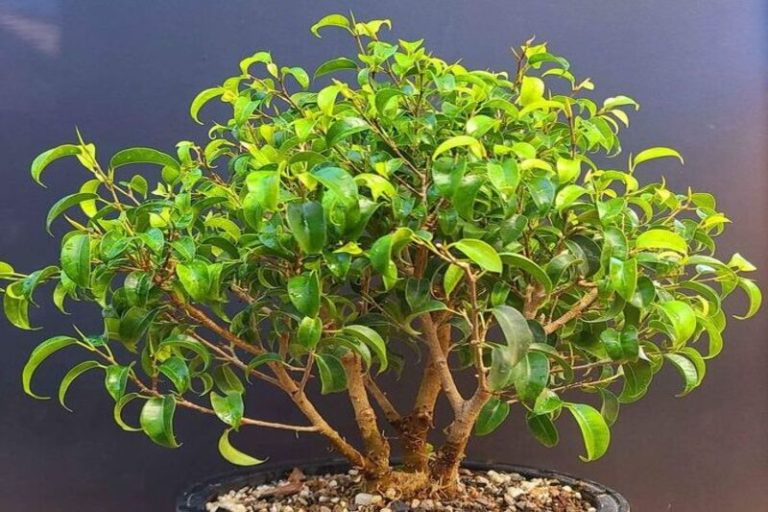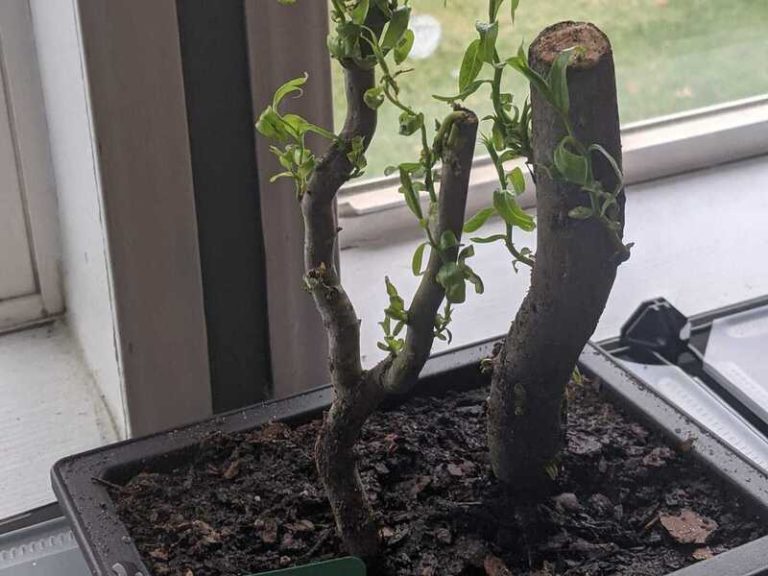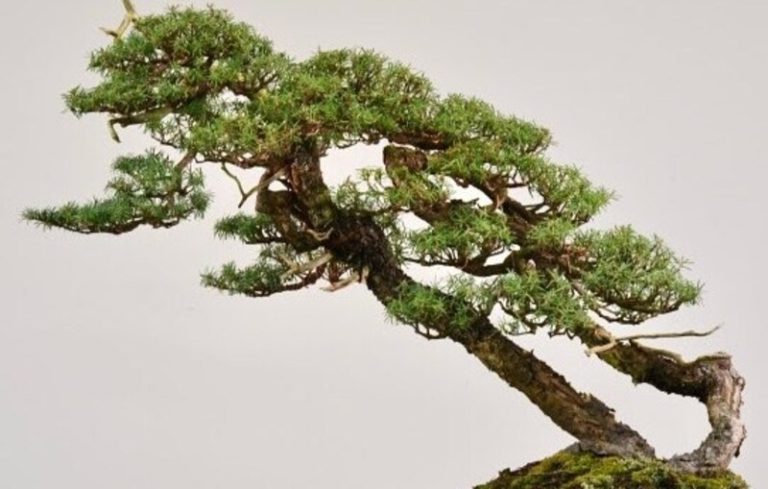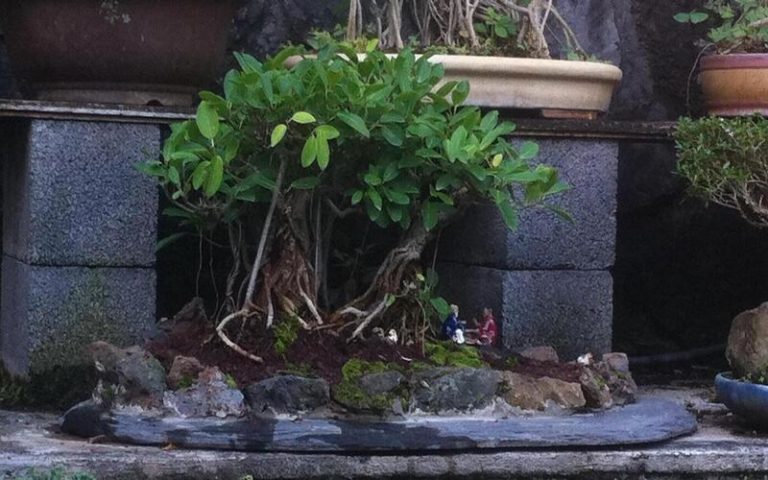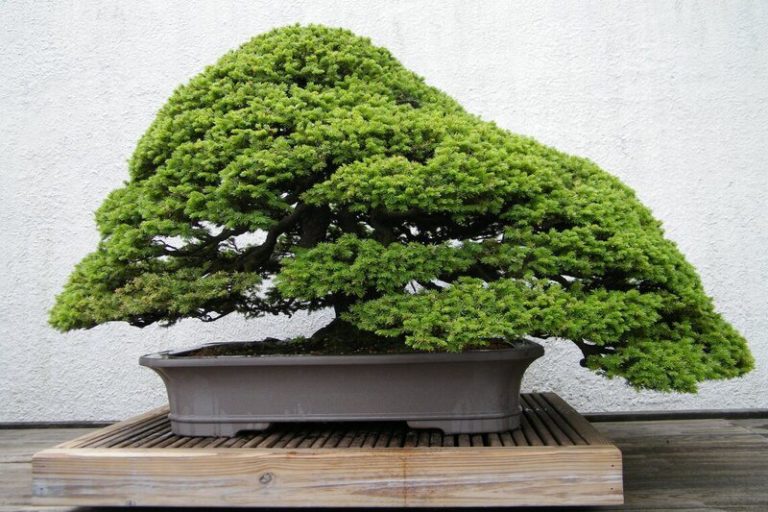Sycamore Tree Bonsai: A Fusion of Nature, Art, and Culture
Welcome to the Sycamore Tree Bonsai world! Have you ever noticed those little trees that appear to be miniatures? That is Bonsai, and Sycamore Tree Bonsai is a unique and intriguing kind to cultivate. In this post, we’ll go over all you need to know about these adorable tiny trees, including how to care for them.
What is Sycamore Tree Bonsai?
Bonsai is an old Japanese art form that involves the cultivation of tiny trees in small pots. Sycamore Tree Bonsai is a subspecies of the sycamore tree family. Their modest size and beautiful forms set them apart.
History and Origins of the Sycamore Tree Bonsai
Bonsai, with its exquisite tiny trees, has a long history spanning centuries and civilizations. The Sycamore tree is an outstanding example of one of the many species that have been converted into these intriguing living artworks. The origins and history of the Sycamore Tree Bonsai give an intriguing excursion into the interwoven realms of nature, culture, and creative expression.
Ancient Beginnings:
The origins of Bonsai may be traced back to ancient China and Japan. Initially, the technique concentrated on cultivating and molding trees as emblems of riches and distinction, as well as a link between mankind and the natural world. From its utilitarian beginnings, the notion progressively expanded to include a significant aesthetic and spiritual dimension.
East Meets West:
As the art of bonsai spread outside of Asia, the Sycamore tree started to make a name for itself. Sycamore trees, which are known for being strong and flexible, caught the attention of bonsai fans all over the world because their leaves look like maple leaves. The Western sycamore (Platanus occidentalis) and its close cousins were often chosen because they looked nice and were good for the art of Bonsai.
Transformation into Art:
To grow a Sycamore Tree Bonsai, you have to give it careful care, shape it, and feed it. Over time, these trees are trimmed, wired, and shaped to look like their full-sized versions in terms of grandeur and beauty. Sycamores have unique bark that naturally peels away in interesting patterns. This gives the Bonsai even more character.
Symbolism and Significance:
The Tree of Sycamore Bonsai, like all Bonsai, have meanings beyond how beautiful they look. These tiny trees show that you can keep going even when things are hard. They also show the careful balance between nature and human action. Their growth over years and even decades shows how time goes by and how bonsai artists get better at what they do.
Cultural Reverberations:
The Tree of Sycamore Cultural contacts have had a big impact on the path that bonsai has taken. From its roots in the East to its use in Bonsai in the West, this tree has become a link between different cultures and ways of making art. The combination of Eastern thought and Western art has led to a mix of techniques and ways of looking at things that is still changing.
A Timeless Art Form:
Growing a Sycamore Tree Bonsai is still an art form that requires patience, skill, and a close relationship with nature. The history and roots of these tiny wonders show how much people have always been interested in the beauty and balance of the natural world. As the art of bonsai continues to grow, the Sycamore Tree bonsai stands as a live symbol of history, culture, and the limitless creativity of the human spirit.
Sycamore Tree Bonsai and Their Symbolism
Bonsai trees, like the beautiful Sycamore Tree Bonsai, have a special place in the world of symbols. Not only are these little trees beautiful to look at, but they also have deep meanings that relate to the human experience. The meaning of the Sycamore Tree Bonsai is based on the ideas of strength, change, and the complex dance between nature and art.
Resilience and Endurance:
What does the Sycamore Tree mean? Bonsai has a lot to do with how well it can grow in different circumstances. Just as a full-size sycamore tree can survive in a variety of conditions, so can a bonsai form. This shows that even though life’s problems are hard, they can be solved with drive and the ability to change.
Time and Patience:
A Sycamore Tree Bonsai shows how patient you have to be and how much time has passed as it grows. The slow, careful way these trees are cared for and shaped is like how life itself changes over time. This metaphor tells us to enjoy the beauty of growth in its own time and to enjoy the trip instead of trying to get to the end quickly.
Transformation and Balance:
The way a normal tree becomes a Sycamore Tree Bonsai shows the careful balance between human action and nature forces. This balance shows our ability to live in harmony with nature. The Bonsai artist’s touch shows how we can change our world while still appreciating its natural beauty.
Connection to Nature:
Bonsai, like the Sycamore Tree Bonsai, tells us that we are part of nature. Caring for these tiny trees helps people feel more responsible for the environment and learn more about the complex relationships that keep life going on Earth.
Inner Reflection and Serenity:
A Sycamore Tree Bonsai can make you feel calm and make you want to think about things. The calm beauty of the tree reminds us to stop, think, and find comfort in the simple beauty of nature. This metaphor shows how important it is to take care of our mental landscapes as well as the outside world.
Cultural and Artistic Fusion:
What the Sycamore Tree Means Bonsai is also connected to the sharing of cultures that happens in the world of bonsai art. As a bridge between East and West, sycamore trees have a meaning that brings together different cultures, ideas, and styles. This mix shows how people all over the world are linked and how much they value natural beauty.
Personal Growth and Evolution:
Seeing a small seedling develop into a polished Sycamore Tree Bonsai may be a metaphor for human progress and self-discovery. Our own experiences mould us into the people we are, much like the branches of a tree do over time. The symbolism here serves as a reminder that progress is a continual process.
In essence, Sycamore Tree Bonsai symbolism involves not just the physical development of a tree, but also deeper themes of human persistence, connection, and the delicate dance between nature and creation. These small trees serve as living symbols of the complex interaction we have with the world around us, prompting us to appreciate the intricacies of life and the tales they tell.
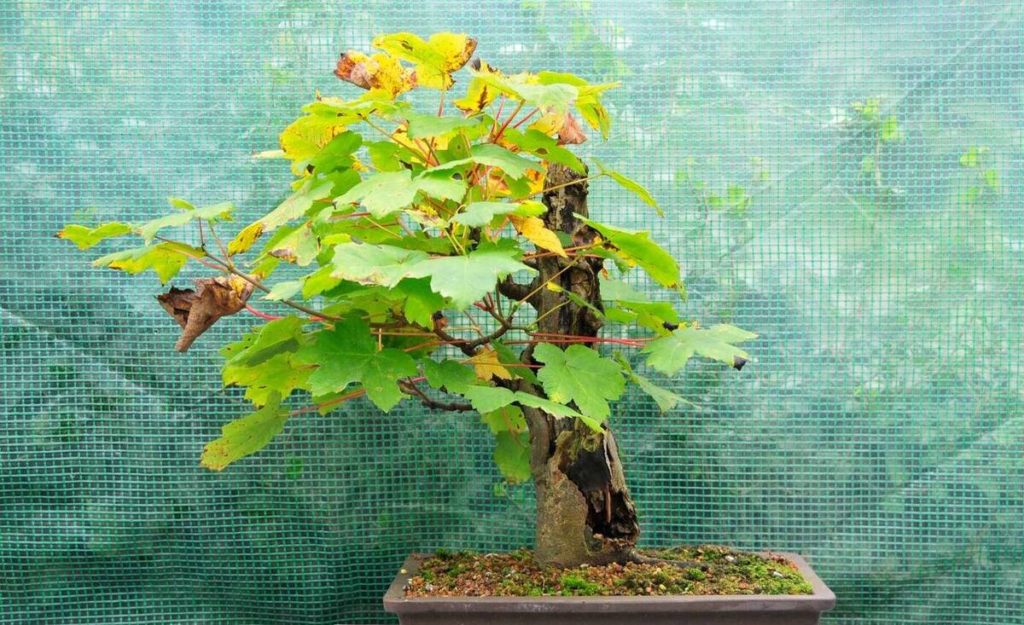
Characteristics of the Sycamore Tree Bonsai
With its unique features and charming look, the Sycamore Tree Bonsai has a special place in the world of small trees. Let’s take a closer look at what makes the Sycamore Tree Bonsai a great choice for both bonsai fans and people who just like them.
Leaves and Foliage:
The leaves of the Sycamore Tree Bonsai are one of the things that make it stand out. Most of the time, the leaves have lobes that look like fingers on a hand. The ends of the leaves can be ragged or cut, which makes them look a little more interesting. Depending on the type of sycamore, the leaves can be different sizes and colors, from bright green to red, orange, and yellow in the fall.
Bark and Trunk:
The bark on its own is a beautiful part of the Sycamore Tree Bonsai. Sycamores are known for their peeling bark, which has a unique design and shows a mosaic of colors underneath. This natural trait gives the bonsai’s trunk structure and character, making an art piece that changes over time.
Size and Structure:
Sycamore Tree Bonsai come in different sizes, so fans can choose the one that fits their tastes and space needs best. Bonsai is an art form that makes use of the tree’s small size and complex branches. The branches can be trained and shaped to make dynamic compositions that catch the spirit of a full-sized tree in a smaller size.
Seasonal Changes:
Sycamore Tree Bonsai change beautifully with the seasons, just like their full-sized cousins. In the spring, when new leaves come out, they are bright green and show that warmer weather is coming. As summer goes on, the canopy gives more and more shade that is lush and welcoming. In the fall, the leaves of the Sycamore Tree Bonsai turn fiery colors, giving the Bonsai experience a touch of nature’s magic.
Adaptability and Resilience:
Sycamore trees are known for being able to grow well in many different places. This toughness works well in the Bonsai setting, which makes the Sycamore Tree Bonsai a great choice for both newcomers and experts. It can grow well indoors or out, as long as its basic needs are met, because it is flexible.
Aesthetic Options:
The Sycamore Tree Bonsai gives you a lot of ways to show yourself through art. It is perfect for a wide range of Bonsai types because of its unique leaves, bark, and spreading patterns. The Sycamore Tree Bonsai can be made to look like many different kinds of art, from the classic formal upright style to the playful windswept style.
Cultural Significance:
The Sycamore Tree Bonsai is important to culture because it connects Eastern and Western Bonsai styles. Its mix of unique qualities and adaptability represents the coming together of different points of view and the peaceful coexistence of different creative inspirations.
In short, the Sycamore Tree Bonsai is interesting because of its unique leaves, beautiful wood, and ability to grow in different places. Its traits make it a good subject for imagination and stories, and its strength and beauty make it a valuable addition to any bonsai collection. No matter how long you’ve been interested in Bonsai or how new you are to the art, the Sycamore Tree Bonsai is sure to amaze and impress you.
How to Grow a Sycamore Tree Bonsai
Growing a Sycamore Tree Bonsai is a satisfying process that takes time, care, and a little bit of imagination. Here’s a step-by-step guide to help you start the exciting journey of growing your own little beauty.
1. Selection of Sycamore Species:
Choose a Sycamore type that will work for your Bonsai. The Western sycamore (Platanus occidentalis) or a similar tree is a popular pick. Think about things like the weather where you live and how big you want your bonsai to be.
2. Seed or Sapling:
You can either start with seeds or buy a young tree from a nursery. Growing from seeds takes more time and care, but twigs give you a head start. If you choose seeds, be sure to carefully follow the guidelines for how to get them to grow.
3. Potting and Soil:
To stimulate healthy root development, use well-draining bonsai soil. Choose a shallow bonsai container with drainage holes to give your Sycamore Tree Bonsai plenty of room to grow.
4. Initial Pruning and Shaping:
As your tree grows, begin with light pruning to encourage a balanced structure. Allow the main trunk to grow taller while trimming lateral branches to promote a harmonious silhouette.
5. Wiring and Shaping:
When the branches are more flexible, shape them using bonsai wire. Wrap the wire around the branches gently, bending them into suitable positions. To avoid injuring the branches, avoid applying too much pressure.
6. Repotting:
Every two to three years, in the early spring, repot your Sycamore Tree Bonsai before new growth begins. Trim some roots and refill soil to give your tree ample room to develop and thrive.
7. Watering:
Sycamore Tree Bonsai prefer slightly moist soil. Water the tree when the top inch of soil feels dry. Avoid overwatering, as excessive moisture can lead to root rot.
8. Sunlight and Placement:
Bright, indirect sunshine is ideal for Sycamore Tree Bonsai. Place your Bonsai in an area that receives several hours of direct sunshine each day. During the warmer months, you may also bring it outside and gradually acclimate it to direct sunshine.
9. Fertilization:
During the growing season (spring through early fall), use a balanced liquid fertilizer to supply critical nutrients for optimal development. Follow the dosing recommendations on the fertilizer container.
10. Pruning and Maintenance:
To keep your Bonsai in shape, prune and shape it on a regular basis. Remove any dead or diseased branches or leaves. This procedure promotes the growth of new branches while also preserving the visual appeal of your tree.
11. Winter Care:
During winter, protect your Sycamore Tree Bonsai from freezing temperatures. You can bring it indoors to a cool, well-lit location or provide winter protection outdoors.
12. Patience and Enjoyment:
Growing a Sycamore Tree Bonsai takes time. Take pleasure in the process and the beauty you’re producing as you see your tree develop and adapt.
Growing a Sycamore Tree Bonsai is a horticultural and aesthetic endeavor. You’ll be nurturing a living work of art that displays your passion and ingenuity with each stage. Embrace the adventure, adjust to your tree’s demands, and let the beauty of your Sycamore Tree Bonsai to grow.
Displaying and Showcasing the Sycamore Tree Bonsai
Your efforts in producing a Sycamore Tree Bonsai merit a spectacular display. Displaying your little creation is an art form in and of itself, enabling you to share the beauty and craftsmanship that you’ve cultivated. Here’s a step-by-step approach to displaying your Sycamore Tree Bonsai with beauty and delicacy.
1. Choosing the Right Display Area:
Choose a position that provides the ideal blend of natural light and protection. Ideal locations include indoor windowsills, outdoor patios, and garden places with filtered sunshine. Consider the environment, since harsh weather conditions may need you to bring your Bonsai indoors during certain seasons.
2. Picking the Perfect Pot:
Choose a bonsai container that suits the design and size of your Sycamore Tree Bonsai. The container should complement the overall design without dominating the tree. Consider colors and forms that complement the natural beauty of the tree.
3. Elevating with Stands:
Bonsai stands come in a variety of styles and materials, giving a touch of refinement to the display. These stands not only bring the Bonsai up to eye level, but they also add to the overall visual attractiveness.
4. Adding Accent Plants:
Accent plants, sometimes known as “companion plants,” can be used to enhance the beauty of a Bonsai. These little plants can be displayed together to form a harmonious and balanced arrangement.
5. Creating a Focal Point:
Make your Sycamore Tree Bonsai the center point of your presentation. Its distinct features and sophisticated design should pique your interest right away. Arrange other things that compliment the beauty of the Bonsai.
6. Showcasing Seasons:
Celebrate the changing seasons by modifying your display. For example, in the fall, place the Sycamore Tree Bonsai against a backdrop of seasonal hues to highlight its vivid leaves.
7. Using Display Tables:
A display table can elevate your Bonsai both literally and metaphorically. Choose a table that complements your interior or garden design while ensuring it’s sturdy and level.
8. Embracing Minimalism:
Sometimes, less is more. Allow your Sycamore Tree Bonsai to shine by minimizing clutter around it. A clean and uncluttered display lets the tree’s beauty take center stage.
9. Rotating the Display:
Regularly rotate your Sycamore Tree Bonsai to ensure even growth and sun exposure. This also gives viewers a chance to appreciate the tree from different angles.
10. Sharing at Exhibitions:
Participating in Bonsai exhibits or shows helps you to share your Sycamore Tree Bonsai with a larger audience. Before displaying your Bonsai at such events, make sure your exhibit is spotless and that it has been well-cared for.
11. Capturing Moments:
Photograph your Sycamore Tree Bonsai to capture its beauty. These photographs not only serve as treasured recollections, but they also aid in tracking the tree’s progress through time.
Displaying your Sycamore Tree Bonsai allows you to showcase your love of both nature and art. By curating the exhibit with care, you not only highlight your hard work but also allow people to enjoy and connect with the beauty you’ve created. Remember that the art of presenting a Bonsai is a constantly developing adventure that displays your distinct style and perspective.
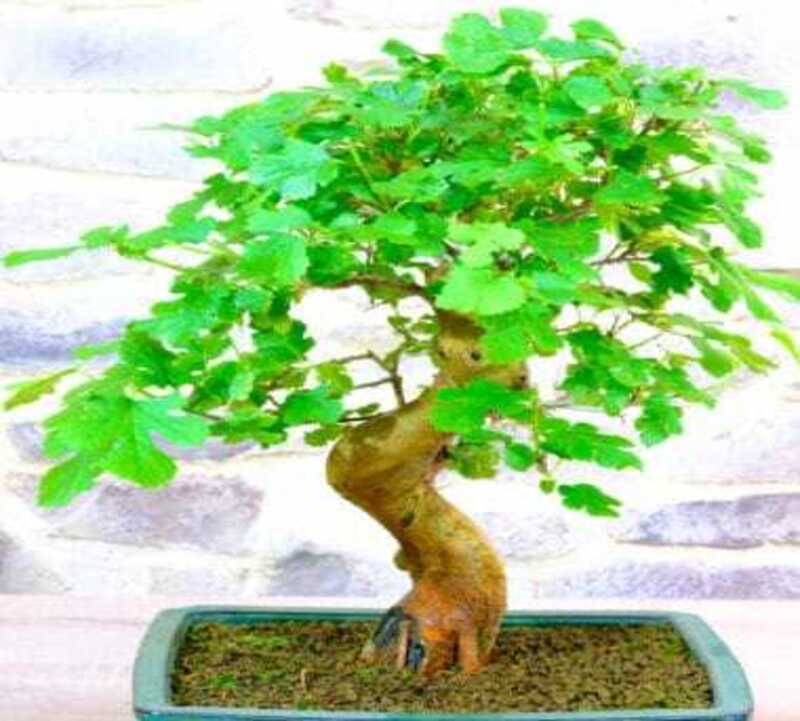
Styling and Design of Sycamore Tree Bonsai
To make a work of art out of a Sycamore Tree Bonsai, you need an artistic eye and a deep understanding of the tree’s natural tendencies. Styling and designing a bonsai is a creative process that lets you shape the shape of the plant and give it a sense of unity. Let’s look at the steps and rules that will help you make a beautiful work of art.
1. Choose a Style:
There are many ways to shape a bonsai tree, and each style shows a different artistic idea. Think about styles like formal upright, casual upright, waterfall, windswept, and others. You should choose a style that fits with the tree’s personality and your own tastes.
2. Study Your Tree:
Look at how your Sycamore Tree Bonsai is growing, how its branches are set up, and how it looks overall. Knowing the tree’s natural habits will help you come up with a design that works well with the tree’s natural traits.
3. Branch Selection:
Find the main parts that will make up the base of your image. The main stems should be in the right place, balanced, and in keeping with the style chosen. Think about the rule of thirds, which says to divide the tree’s height into thirds and put the biggest branches at these points.
4. Pruning:
Start the process of styling by trimming. Take off any dead or weak twigs and cut back any growth that is too much. By cutting back stems, you can change the shape and send energy to the ones you want to grow more.
5. Wiring Techniques:
Wiring is an important way to shape the branches of your bonsai. You can gently bend twigs into the shapes you want by using aluminum or copper wire. Start at the branch’s base and wrap the wire around it in a circular motion all the way up.
6. Aesthetic Balance:
Achieving visual balance is crucial. Ensure that branches are distributed evenly around the tree, with no overcrowding or gaps. Step back regularly to assess the tree from different angles and adjust as needed.
7. Taper and Nebari:
A nice taper is made by a branch that gets thinner as it goes from the base to the tip. Nebari, which means “root flare,” is the obvious growth of roots at the base of the tree. Taper and Nebari both make your bonsai look better as a whole.
8. Patience and Time:
Styling a Sycamore Tree Bonsai is a gradual process. Changes take time to manifest, so be patient and give your tree the opportunity to respond and adapt to your design.
9. Seasonal Adjustments:
When the tree is dormant, usually in late winter or early spring, is the best time to do things like heavy trimming and wiring. During the growth season, you can prune and take care of your plants with less effort.
10. Embrace Adaptability:
Flexibility is important. As your Sycamore Tree Bonsai grows, you may need to change the way you made it in the beginning. Adapt to how the tree grows and changes to give it the most beautiful shape.
11. Personal Expression:
The way you designed your Sycamore Tree Bonsai shows how talented you are. Don’t be afraid to try different things that will make your work stand out.
Styling and making a Sycamore Tree Bonsai is an adventure in art. It’s a conversation between your ideas and the natural beauty of the tree. The result is a live work of art that shows your creativity and respect for the art of bonsai. With careful study, careful pruning, and creative wiring, you can make a Sycamore Tree Bonsai that shows both the beauty of nature and your artistic spirit.
How to Care for and Maintain a Sycamore Tree Bonsai
To take care of a Sycamore Tree Bonsai, you need to pay close attention, know what you’re doing, and be patient. By taking care of it and knowing what it needs, you can keep your tiny masterpiece healthy, beautiful, and full of life. Here’s a full guide to caring for and maintaining your Sycamore Tree Bonsai:
1. Watering:
- Check the soil moisture regularly. Water when the top inch of soil feels slightly dry.
- Water thoroughly until water drains from the bottom of the pot.
- Avoid overwatering, as it can lead to root rot. Ensure proper drainage.
2. Sunlight:
- Sycamore Tree Bonsai thrive in bright, indirect sunlight.
- Place your Bonsai in a location where it receives several hours of sunlight each day.
- During the hottest summer months, provide some shade during the peak afternoon sun.
3. Temperature and Humidity:
- Sycamore trees are hardy, but extreme cold or heat can stress your Bonsai.
- Keep your Bonsai in a temperature-controlled environment during severe weather conditions.
- Maintain moderate humidity levels, especially if you’re growing your Bonsai indoors.
4. Pruning and Shaping:
- Regular pruning encourages new growth and maintains the desired shape.
- Remove dead, damaged, or excessive branches.
- Prune during the tree’s dormant season, typically late winter or early spring.
5. Wiring and Styling:
- Use bonsai wire to shape branches and guide their growth.
- Be cautious not to leave wires on for too long to prevent wire marks.
- Remove the wire before it cuts into the bark.
6. Fertilization:
- Use a balanced, liquid bonsai fertilizer during the growing season (spring through early autumn).
- Follow the manufacturer’s instructions for application frequency and dosage.
- Reduce or stop fertilization during the dormant winter months.
7. Repotting:
- Repot your Sycamore Tree Bonsai every two to three years in spring.
- Trim back some roots to maintain a healthy root system and replace the soil with fresh bonsai soil mix.
8. Pest and Disease Management:
- Regularly inspect your Bonsai for pests like aphids, mites, or scale insects.
- If you notice any pests or diseases, take prompt action to address them.
- Quarantine new plants before introducing them to your collection.
9. Seasonal Care:
- Adjust your care routine according to the changing seasons.
- During winter, protect your Bonsai from freezing temperatures and strong winds.
10. Monitor Growth:
- Regularly observe your Bonsai’s growth and adjust your care routine as needed.
- Ensure that branches are growing in the desired direction and that the overall shape is maintained.
11. Patience and Observation:
- Bonsai trees need time to get used to care and respond to it. Watch how your tree reacts to different ways of caring for it and make changes as needed.
Taking care of a Sycamore Tree Bonsai is a long-term job that pays off with a beautiful, healthy work of art. You’ll enjoy watching your Bonsai grow and change over time if you give it the right conditions, pay attention to its specific needs, and care for its growth.
Sycamore Tree Bonsai Care Sheet
| Aspect | Care Tips |
| Watering | – Check soil moisture; water when top inch is slightly dry. |
| – Water thoroughly until water drains from the bottom. | |
| – Avoid overwatering to prevent root rot. | |
| Sunlight | – Place in bright, indirect sunlight for several hours daily. |
| – Provide shade during intense summer afternoons. | |
| Temperature | – Keep in a controlled environment during extreme weather. |
| – Protect from frost and excessive heat. | |
| Humidity | – Maintain moderate humidity levels, especially indoors. |
| Fertilization | – Use balanced liquid bonsai fertilizer in growing season. |
| – Follow manufacturer’s instructions for dosage and frequency. | |
| Pruning and Trimming | – Regularly prune to maintain shape and encourage new growth. |
| – Remove dead or unhealthy branches. | |
| Wiring and Styling | – Use wire to shape branches; avoid leaving wire too long. |
| – Remove wire before it cuts into the bark. | |
| Repotting | – Repot every 2-3 years in spring; trim roots and replace soil. |
| Pest and Disease Control | – Regularly inspect for pests and diseases. |
| – Take immediate action if pests or diseases are found. | |
| Winter Care | – Protect from freezing temperatures and strong winds. |
| Regular Maintenance | – Observe growth and adjust care as needed. |
| – Maintain desired shape through pruning and wiring |
Remember that your Sycamore Tree Bonsai may have different care needs based on where and how it lives. Your bonsai will grow and show off its beauty as long as you keep an eye on it and respond to its needs.
Conclusion:
Now that you know how to grow and take care of a Sycamore Tree Bonsai, why not try it? Start learning about bonsai and enjoy the beauty of these small trees that you can keep for a long time. Have fun growing Bonsai!
FAQ:
Q: What is Sycamore Tree Bonsai?
A: Sycamore Trees Bonsai is a small sycamore tree that is grown using the art of bonsai. It includes shaping and caring for the tree to make a small work of art while keeping the tree’s natural beauty.
Q: Can I bonsai a sycamore tree?
A: Yes, you can bonsai a sycamore tree. While it requires careful attention due to its rapid growth, sycamore trees can be shaped into stunning Bonsai through pruning, wiring, and styling techniques.
Q: What does the sycamore tree symbolize?
A: Sycamore trees represent the ability to bounce back, change, and find a balance between nature and human actions. They’re also linked to change, as they grow from simple starts to beautiful maturity.
Q: Are sycamore trees good for anything?
A: Sycamore trees have practical uses. Their wood is used in furniture, cabinetry, and flooring. They provide shade and contribute to ecosystems by supporting wildlife.
Q: What does the Bible say about sycamore trees?
A: The Bible says that the sycamore tree is a sign of humility and change. In stories, like the one about Zacchaeus climbing a sycamore tree to see Jesus, it’s used to show how ready people are to change and grow spiritually.
Q: Is a sycamore tree poisonous?
A: No, sycamore trees are not poisonous. They are safe and not known to cause harm to humans or animals.
Q: How do you care for a Sycamore Tree Bonsai?
A: For care, the plant needs the right amount of water, bright but indirect sunshine, regular pruning, and wiring methods to shape it. It’s also important to move the plant every two to three years, feed it during the growing season, and keep an eye out for bugs.
Q: Can I keep a Sycamore Tree Bonsai indoors?
A: While sycamore trees prefer outdoor settings, you may temporarily maintain them within by providing adequate light and humidity. However, in most circumstances, they are better suited for outdoor growth.
Q: How long does it take for a Sycamore Tree Bonsai to mature?
A: How long it takes a Sycamore Tree Bonsai to grow up depends on things like how old it is, how big it was when you got it, how well you care for it, and how you style it. Usually, it can take anywhere from a few years to a few decades to look the way you want.
Q: Can I wire and shape a Sycamore Tree Bonsai?
A: Yes, you can wire and shape a Sycamore Tree Bonsai. Wiring should be done carefully during the tree’s growth season, and the wire should be removed before it bites into the bark.
Q: How do I prevent pests and diseases on my Sycamore Tree Bonsai?
A: Regularly inspect your Bonsai for pests and diseases. Maintain good hygiene, avoid overwatering, and keep your Bonsai in optimal conditions to prevent infestations.
Q: Can I collect a Sycamore tree from the wild for Bonsai?
A: Collecting a sycamore tree from the wild for Bonsai is possible, but it can be challenging due to their size and root structure. It’s best to start with nursery-grown saplings or seeds.
Also Read:



